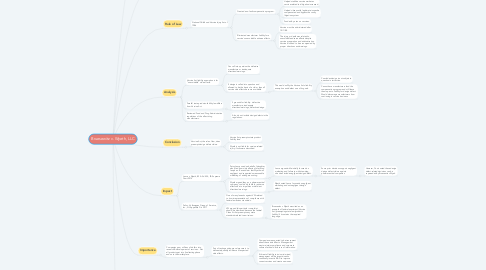
1. Facts
1.1. Parties
1.1.1. Russell Bruesewitz on behalf of Bruesewitz family
1.1.2. Wyeth, LLC
1.1.2.1. Now owns the original vaccine manufacturer, Lederle Laboratories.
1.2. What happened
1.2.1. Bruesewitz family describes daughter, Hannah, got a Lederle DTP vaccine in 1992 and within hours, developed seizures.
1.2.1.1. Hannah now has seizure disorder and subsequent developmental disabilities.
1.2.1.1.1. Vaccine was withdrawn from market years later
1.3. Procedural history
1.3.1. 1. Bruesewitz family filed claim against Wyeth in a special court (Vaccine Court) within the US Court of Federal Claims
1.3.1.1. Court denied claim.
1.3.2. 2. Bruesewitz family refiled claim with Pennsylvania state court stating Lederle was subject to liability and negligence under Pennsylvania common law.
1.3.2.1. Suit moved to Federal District Court. Suit dismissed because the relevant Pennsylvania state law was preempted by the National Childhood Vaccine Injury Act.
1.3.2.1.1. Third Circuit Court of Appeals affirmed dismissal.
1.3.3. 3. Case brought to Supreme Court.
2. Issue
2.1. Does the National Childhood Vaccine Injury Act of 1986 preempt all vaccine design defect claims against vaccine manufactuers?
3. Rule of Law
3.1. National Childhood Vaccine Injury Act of 1986
3.1.1. Created a no-fault compensation program.
3.1.1.1. Helped stabilize vaccine market as vaccine-related tort litigation increased.
3.1.1.2. Helped citizens with legitimate issues be compensated and bypass the costly litigation system.
3.1.1.3. Funded by a tax on vaccines.
3.1.2. Eliminated manufacturer liability for a vaccine's unavoidable adverse effects.
3.1.2.1. Vaccine must be administered after 10/1/88.
3.1.2.2. The injury or death was related to unavoidable adverse effects despite vaccine preparation and administration. Vaccine also had to be accompanied by proper directions and warnings.
4. Analysis
4.1. Vaccine Act liability exemption is for "unavoidable" side effects.
4.1.1. Can call into question the defective manufacture or inadequate directions/warnings.
4.1.2. If design is called into question and allowed to be the basis of a claim, then all vaccine side effects become avoidable.
4.1.2.1. This would nullify the Vaccine Act's liability exemption and defeat one of its goals.
4.1.2.1.1. Concludes design is not subject to question in tort action.
4.1.2.1.2. Cannot have manufacturers fund the compensation program and still leave them open to liability for design defect. Would discourage manufacturers from continuing in vaccine business.
4.2. Parallel state products-liability law differs from Vaccine Act.
4.2.1. 3 grounds for liability: defective manufacture, inadequate directions/warnings, defective design.
4.3. Reviewed Food and Drug Administration regulations of the affect drug manufacturers.
4.3.1. Also do not include design defects in the regulations.
5. Conclusion
5.1. Vaccine Act, the rule of law, does preempt design defect claims.
5.1.1. Vaccine Act preempts state product liability laws.
5.1.2. Wyeth is not liable for vaccine-related injury if risks were described.
6. Impact
6.1. Lance v. Wyeth, 85 A. 3d 434; PA Supreme Court 2014
6.1.1. Patsy Lance sued on behalf of daughter, who died from side effects of diet drug fen-phen. Based claim that Wyeth was negligent and supported unreasonable marketing of a dangerous drug.
6.1.1.1. Lance argued while initially focused on marketing and failure to withdraw drug, she does include negligent design defect.
6.1.1.1.1. Some prior decisions support negligent design defect claims against pharmaceutical companies.
6.1.2. Wyeth argued they, as a pharmaceutical company, could only liable for adverse effects due to impurities or deficient directions/warnings.
6.1.2.1. Wyeth noted Lance focused on negligent marketing and not negligent design defect.
6.2. Felix v. Volkswagen Group of America, Inc.; NJ Appellate Div 2017
6.2.1. One of many lawsuits against VW related to its misrepresentation of compliance with federal emissions standards.
6.2.2. VW argued this particular complaint should be dismissed because the federal Clean Air Act preempts any state standards related to emissions.
6.2.2.1. Bruesewitz v. Wyeth was cited as an example of federal enactment (Vaccine Act) preempting state law (products liability) if it contains the required language.
7. Importance
7.1. Companies pour millions of dollars into research & development of vaccines. Not all products get into final testing phase and onto the marketplace.
7.1.1. Part of testing and approval process is to delineate/quantify incidence of expected side effects.
7.1.1.1. Companies are expected to be transparent about these side effects. Management must maintain compliance and corporate culture of ethical disclosure of information.
7.1.1.2. If threat of liability torts is minimized, management will be incentivized to continually invest in R&D to improve current vaccines and create new ones.
8. Influence
8.1. Vaccine prices are increasing.
8.1.1. With Vaccine Act and Bruesewitz decision shielding vaccine manufacturers from many potential lawsuits, companies emboldened to enter vaccine business and charge more (prices not necessarily seen by patients).
8.1.1.1. Source: The Price of Prevention: Vaccine Costs Are Soaring
8.2. Multiple companies competing to develop first effective Zika virus vaccine.
8.2.1. Most clinical impact will be on affected developing countries in South America.
8.2.2. Most profitable impact will be from 1) widespread global need 2) potential $1 billion domestic US market that is protected from liability claims
8.2.2.1. Source: Zika vaccine race spurred by crisis and profit potential

